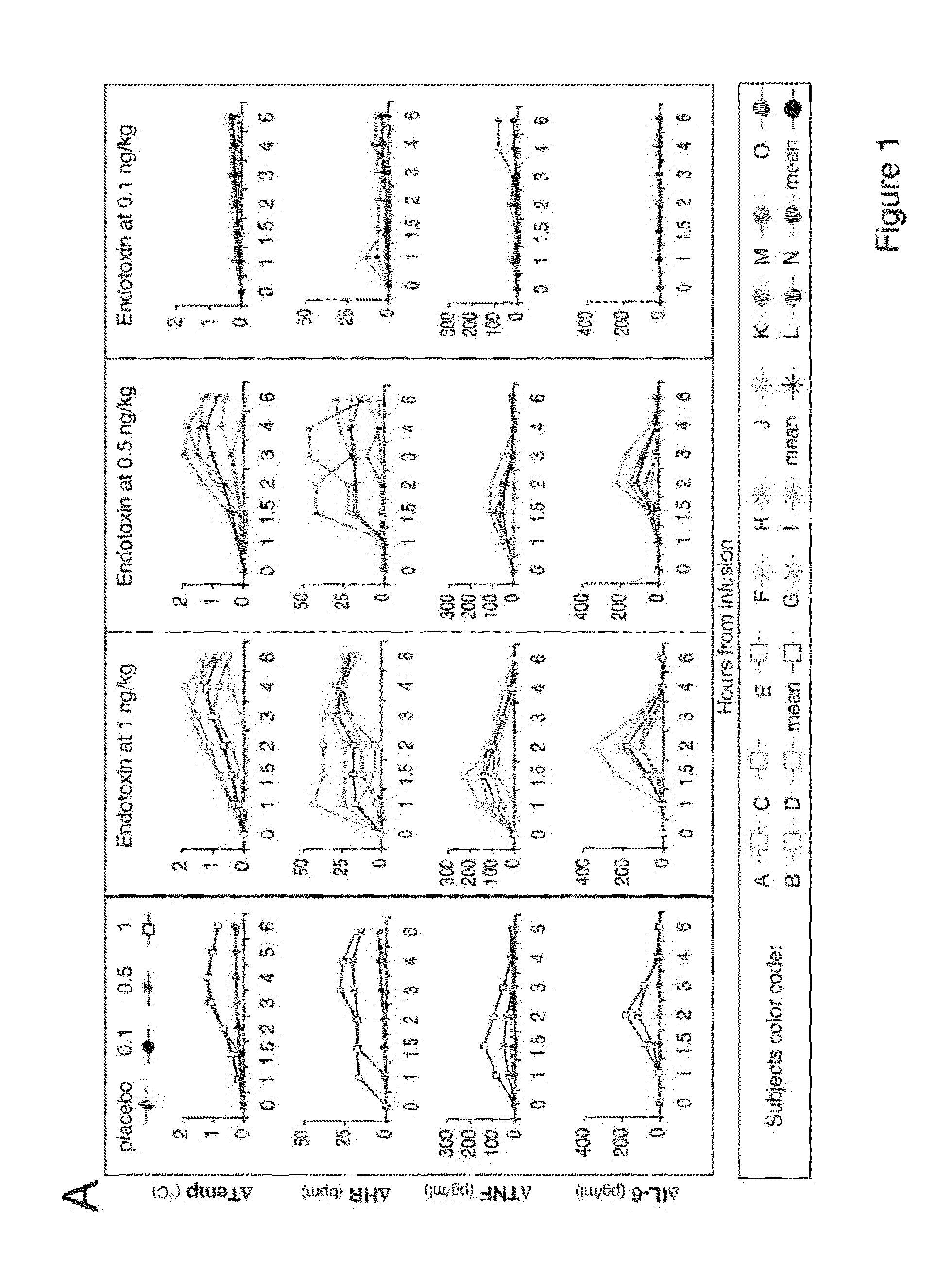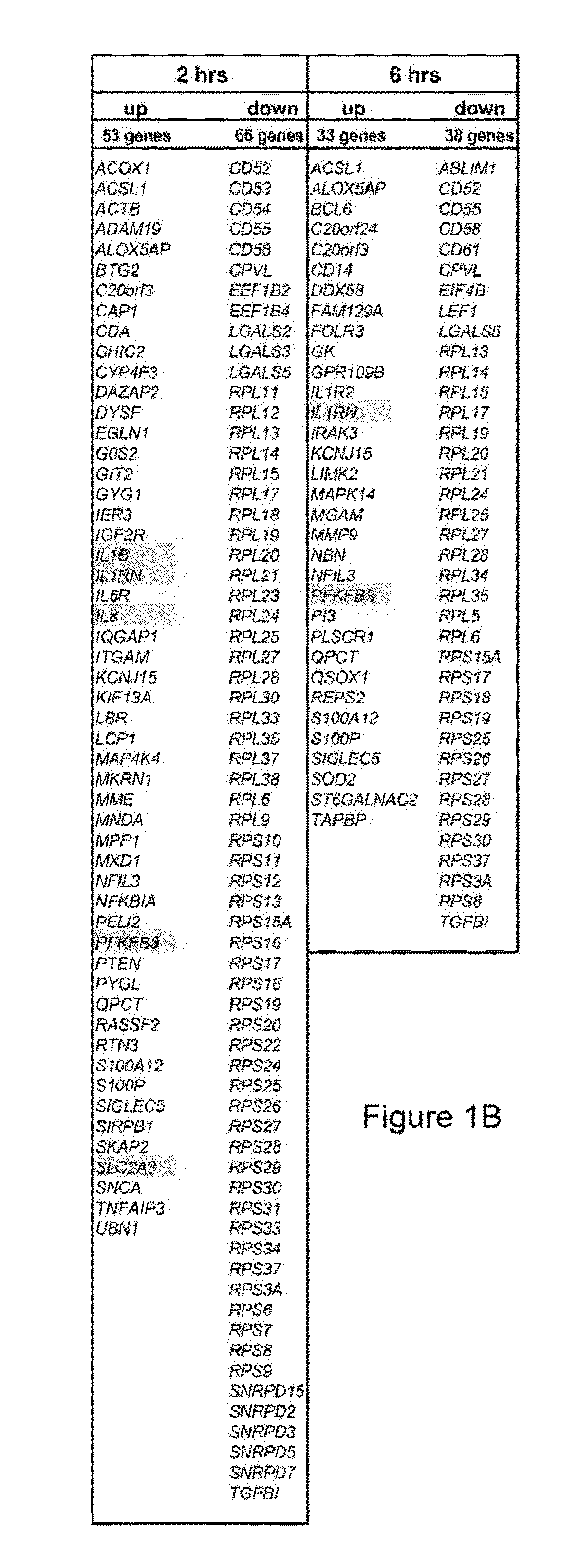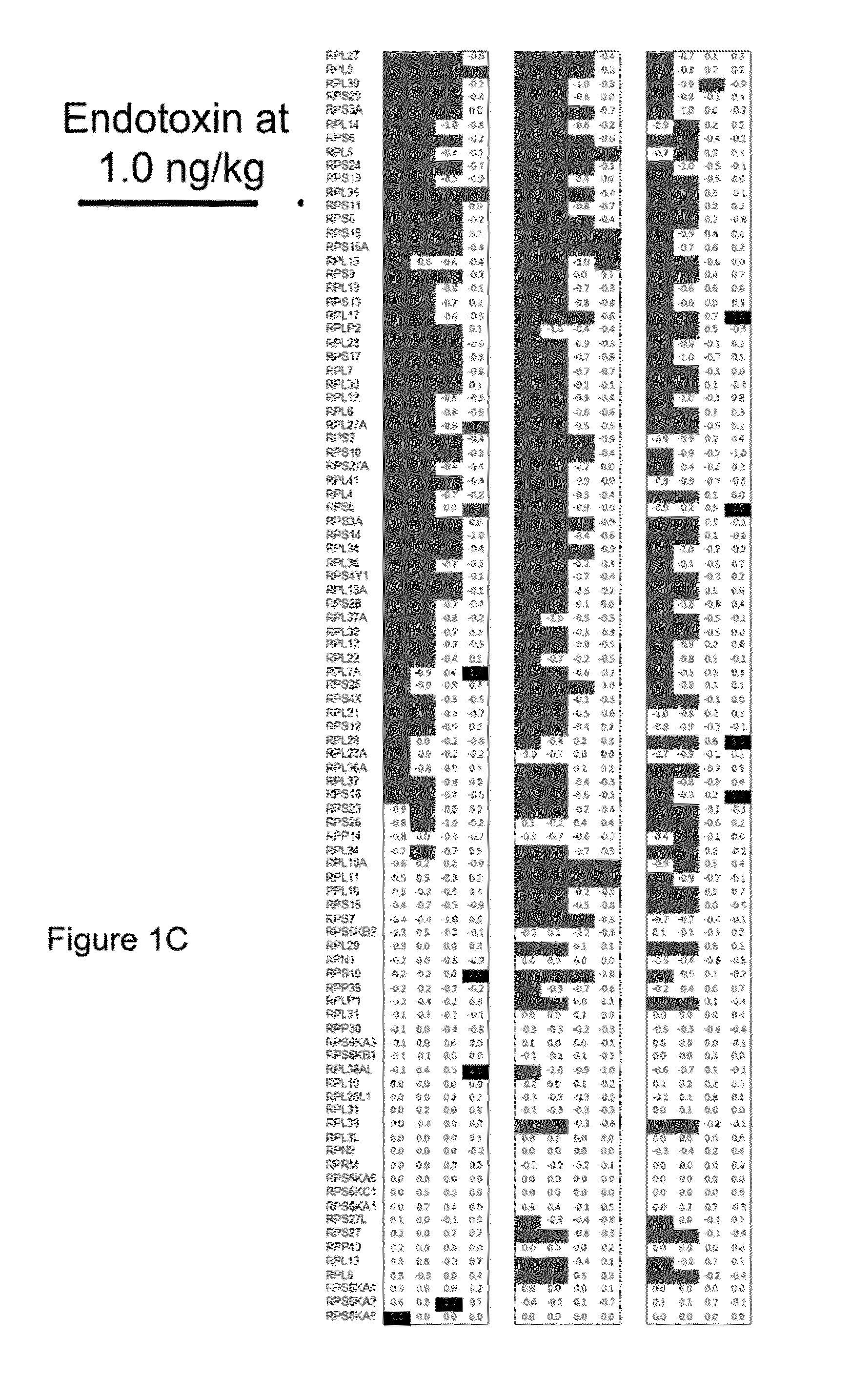Diagnostic and screening methods for inflammation
- Summary
- Abstract
- Description
- Claims
- Application Information
AI Technical Summary
Benefits of technology
Problems solved by technology
Method used
Image
Examples
example 1
Expression of Novel Biomarkers of Low-Grade in Animation in Human Leukocytes
[0059]To characterize the endotoxemia response threshold in human subjects, volunteers were challenged with saline (control) or a bolus endotoxin dose of 0.1-, 0.5- or 1-ng / kg. Each subject (n=5 per group) was assigned a specific color / symbol code shown in FIGS. 1 and 2. Though variable in magnitude, all subjects administered endotoxin at 1 ng / kg exhibited characteristic increases in core temperature, heart rate (HR), and cytokines (FIG. 1A). Subjected challenged with endotoxin at 0.5 ng / kg exhibited attenuated responses, while those challenged with endotoxin at 0.1 ng / kg exhibited, on average, no response (FIG. 1A).
[0060]Prior genome-wide expression analyses identified numerous transcripts that were either induced or suppressed in leukocytes from human subjects challenged with endotoxin at 2- or 4-ng / kg Time-dependent expression analyses from the Focus Gene-Chip® microarrays (Affymetrix) representing 8,793 ...
example 2
Changes in Expression of TLR-4 Signaling Components in Human Leukocytes.
[0077]Materials and Methods
[0078]Antibodies, reagents, and Inhibitors
[0079]The following antibodies were used at the indicated dilution: LC3 (L7543; 1:500) and actin (A2066; 1:1000) from Sigma. IRS-1 (sc-559: 1:1000), HIF-1α (sc-10790; 1:250), Akt (sc-5298; 1:500), and TLR4 (sc-10741; 1:500) from Santa Cruz Biotechnology, phospho-IRS-1 (Ser307) (#2381; 1:1000), phospho-Akt (Thr308) (#9275; 1:1000), phospho-Raptor (ser792) (#2083; 1:1000), Raptor (#2280; 1:200), and Phospho-p70 S6 Kinase (Thr389) (#9205; 1:1000) were from Cell signaling Technology.
[0080]The source of reagents and final concentrations used in this example are as follows:
[0081]Endotoxin (lipopolysaccharide from Escherichia coli 0111B4, Sigma, 10 ng / ml). Insulin (Humalog Mix 50 / 50; Lilly) was used at the indicated concentrations (0.05-1 unit / ml), Polymyxin (Invivogen, 50 μg / ml), CLI-095 (Invivogen; 3 μM), LY294002 (Cayman Chemical; 10 μM), Rapamycin...
PUM
 Login to View More
Login to View More Abstract
Description
Claims
Application Information
 Login to View More
Login to View More - R&D
- Intellectual Property
- Life Sciences
- Materials
- Tech Scout
- Unparalleled Data Quality
- Higher Quality Content
- 60% Fewer Hallucinations
Browse by: Latest US Patents, China's latest patents, Technical Efficacy Thesaurus, Application Domain, Technology Topic, Popular Technical Reports.
© 2025 PatSnap. All rights reserved.Legal|Privacy policy|Modern Slavery Act Transparency Statement|Sitemap|About US| Contact US: help@patsnap.com



